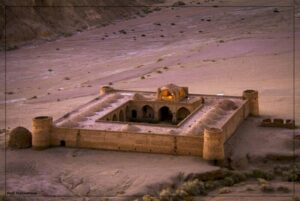“To follow the Silk Road is to follow a ghost. It flows through the heart of Asia but it has officially vanished, leaving behind it the pattern of its restlessness: counterfeit borders, unmapped peoples. The road forks and wanders wherever you are. It is not a single way, but many: a web of choices.” Shadow of the Silk Road, Colin Thubron
The term “Silk Road” was first used in 1877 by German geographer Baron Ferdinand von Richthofen to describe the series of trade routes stretching from China’s ancient capital of Chang’an in the east to the European continent and the Mediterranean Sea in the west. Offshoots of this trade route meandered north into Russia and the Caucasus Mountains, and south into India and Arabia, touching every town and community in between.
Though the term is relatively recent, the Silk Road has a long history which officially began in the 2nd Century BCE, and continued until 1450 AD. But the history of trade along the Silk Road goes back much farther, as people migrated along these routes for thousands of years due to exploration, wars, famine, and persecution.
The trek was arduous. With geographical barriers such as the 600 mile-long Taklamakan Desert, as well as towering mountain ranges, unpredictable weather, and robbers seeking to pilfer goods, few people endured the entire 4,000-mile journey. Rather, goods were trekked from outpost to outpost by traders well versed in short sections of the road.
From Istanbul and Damascus in the west to Dunhuang and Chang’an in the east, these cities were strung across the Silk Road like jewels on a necklace. At the very center of the Asian and European continents was the ancient trade city of Samarkand, where traders and sojourners converged from east and west, where faithful pilgrims and missionaries shared religions, and where goods and ideas flowed as easily as afternoon tea served in bustling chaikhana’s (teahouses).
The Weaver’s Tapestry, book one in The Silk Road series, seeks to resurrect the majestic trade city of Samarkand through the imagined lives of the ancient people who once inhabited it.



